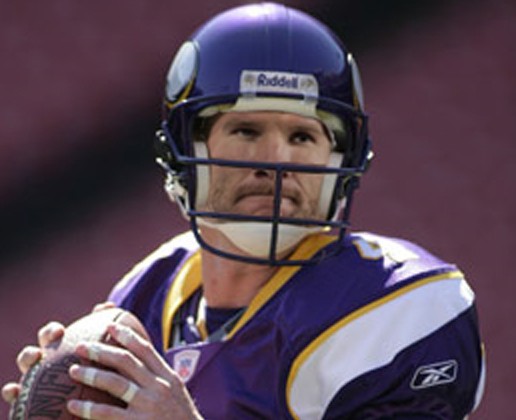Brett Favre will need surgery if he wants to play football again

Minnesota quarterback Brett Favre has a difficult decision in front of him. The 41 yr old told ESPN that the left ankle injury he sustained in the NFC Championship game against the New Orleans Saints is still hurting him. His orthopedic surgeon, Dr. James Andrews, told Favre that surgery would be necessary if he wants to play professional football again. Favre may just retire instead, putting an end to his 19 year NFL career.
On his website, officialbrettfavre.com, Favre says:
“While my ankle has been bothering me, the injury is not debilitating,” the statement said. “For example, I’m able to work around my property without any problems. Sure — certain exercises cause some ankle pain, but it’s nothing that I haven’t experienced [or played with] before. In fact, many people don’t realize that I injured my ankle before the NFC Championship game. I’ve had surgery on this ankle twice before, and I’ve played with the pain before. The hits I took throughout the 2009 season, including the Saints game, just added to the ankle pain and likely caused some bone spurs.”
 The ankle joint is made up of 3 bones, ligaments and a joint capsule:
The ankle joint is made up of 3 bones, ligaments and a joint capsule:
- The tibia,sometimes called the shin bone, is the main bone of the lower leg, and makes up the inside of the ankle joint.
- The fibula is a smaller bone that lays next to the tibia on the outside of the lower leg and makes up the outer side of the ankle joint.
- The talus is a odd hump shaped bone of the foot that the tibia and fibula arch over to form the ankle. Those bumps that stick out from the sides of your ankles are called malleoli (singular is malleolus). They are the end parts of the tibia and fibula that surround the talus.
- A fibrous membrane called the joint capsule, lined with a smooth layer called the synovium, encases the bony joint structure. The joint capsule contains synovial fluid produced by the synovium which allows for smooth movement of the joint surfaces.
- The ankle joint is stabilized by 3 groups of ligaments, which are fibers that hold these bones in place
Bone spurs usually occur as a result of a disease or condition — commonly with osteoarthritis. As osteoarthritis breaks down the cartilage in your joint, your body attempts to repair the loss. Often this means creating new areas of bone along the edges of your existing bones.
Most bone spurs cause no signs or symptoms, being undetected until an X-ray for another condition reveals the growths. If symptomatic, spurs can cause pain or decreased motion in the joints.
























0 comments